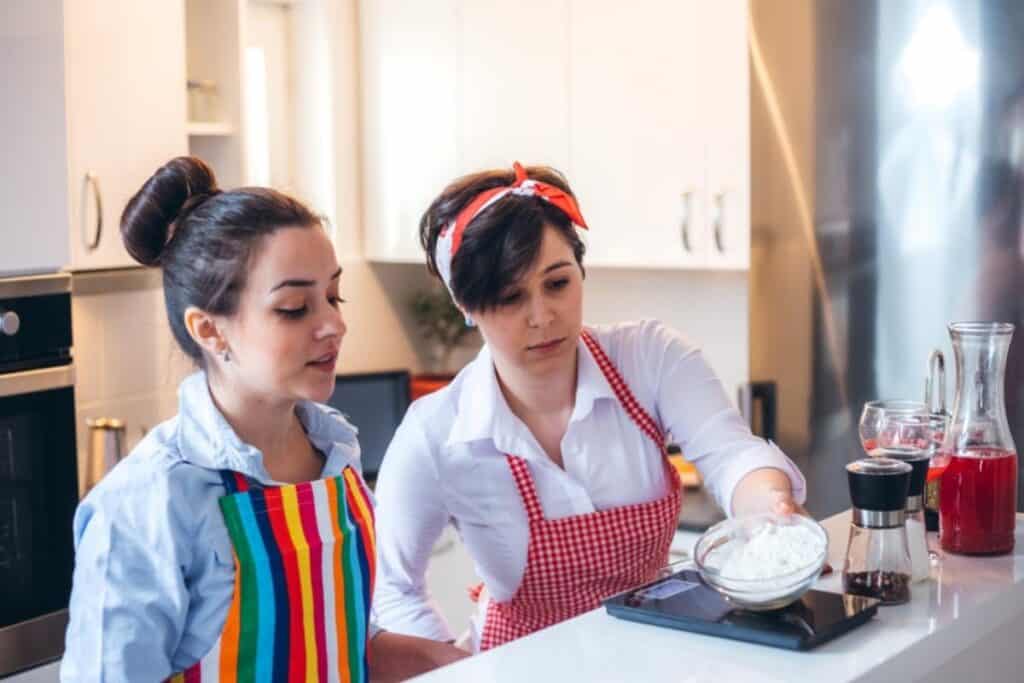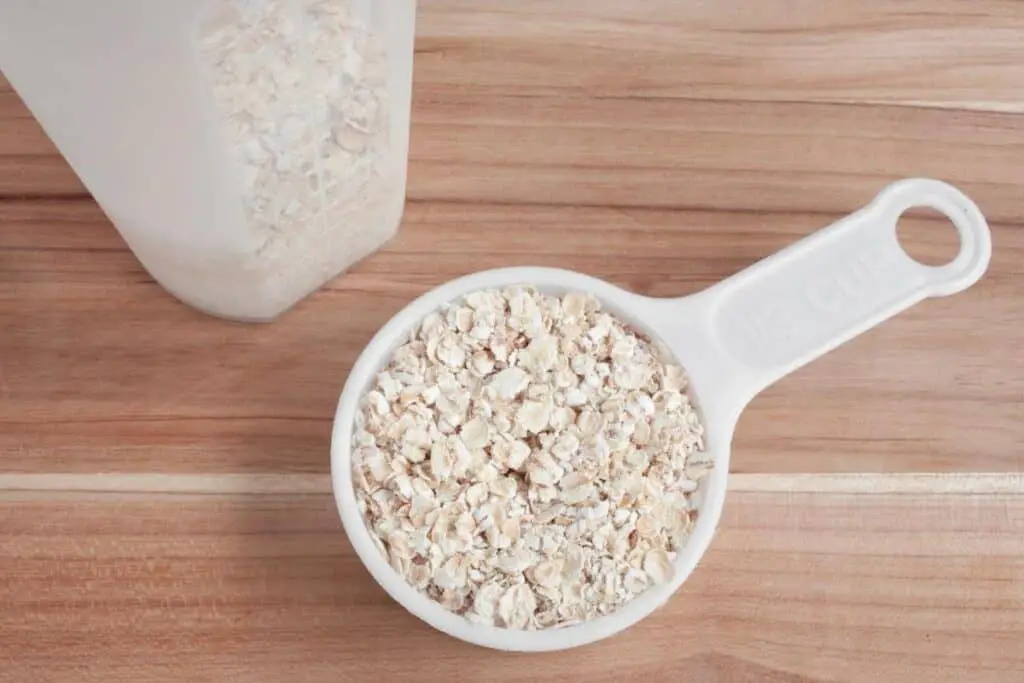Are your baked goods not looking like they should? Perhaps you find that your cakes aren’t rising or your cookies never look like the pictures in the recipe book?
Then your measurements might be the issue! If you aren’t using the right measurements, then your baked goods might not look and taste as they should. But how do we properly measure our flour and other ingredients? Is there a right way to do this?
Now, it might seem as though measuring ingredients is simple, but it can quickly go wrong. By reading this article, you’ll understand how to measure each ingredient correctly and avoid making simple baking mistakes.

How To Measure Flour Correctly
Flour is one of the most common ingredients that is measured incorrectly. Dry ingredients can be compressed easily, so they are difficult to measure by volume. All types of flour, whether that be cake, bread, or all-purpose, can be packed down into a scoop, spoon, or cup.
Scooped flour is heavier than spooned flour as it has fewer air pockets. A cup filled with sifted flour can weigh half as much as a cup of scooped flour.
No matter what flour you use, you need to measure with the Spoon & Level method. Don’t use a measuring cup to scoop it out as you may end up with more flour than you need. Instead, use a spoon to fill a measuring cup with flour.
Don’t tap the cup on the sides or pat the flour down! Once you’re done spooning the flour, use a knife to skim over the flour, making it level. In short, don’t scoop, but spoon & level flour.
Sifted flour is a little different, as it depends on the wording. If the recipe states “a cup of flour, sifted”, you need to measure the flour first, then sift it afterwards. If the wording states “a cup of sifted flour”, then you should sift the flour before measuring it. Put simply, if ‘sifted’ is written before the ingredient, you should sift, then measure. If it’s written after, measure, then sift.
How To Measure Oats Correctly

Before you begin measuring your oats, ensure you’re using the right oats needed for the recipe.
Quick oats and whole oats are different. Whole oats work better in heavier recipes, like granola, oatmeal bars, or oatmeal cookies. Quick oats have a fine consistency, so they work well in recipes that need a powder-like substance, like oat muffins or bread.
You don’t need to purchase quick oats if you have whole oats on hand. Simply use a food processor to break whole oats up until they become a fine powder.
Whether you use quick oats or whole oats, you measure them with the same Spoon & Level method that’s used for flour.
How To Measure Baking Powder & Soda Correctly
Over time, baking soda and baking powder can settle and become clumpy within their tubs. Before you measure these ingredients, shake or stir the container to break the powder up. Then, gently scoop out some powder by using a measuring spoon. Use a knife to skim over the powder’s surface, levelling it off in the process.
Both baking soda and baking powder expire after half a year, though they can start losing efficiency after 3 months. Always label the box with the date of purchase. This will help you replace it when necessary.
How To Measure White Sugar Correctly
The Spoon & Level method is fine for flour and oats, but it shouldn’t be used for sugar.
Instead, use a measuring cup or spoon to scoop some sugar out of the bag. The cup or spoon should be overflowing out of the cup. Next, use a knife to level it off, skimming the excess sugar off from the cup.
Unlike flour, sugar is heavier, so it won’t pack down and settle in the measuring cup. Ideal sweetness levels vary from person to person. Compared to other ingredients, It doesn’t matter if you use a little bit more or less sugar within a recipe.
Despite this, you should always measure sugar exactly as written within the recipe. Sugar crystals can affect other ingredients, but it also helps with consistency and form.
How To Measure Brown Sugar Correctly
Brown sugar should be measured in the same manner as white granulated sugar. You should scoop up sugar in a cup or spoon, then level it off using a knife. There isn’t any different method for light or dark brown sugar.
Light and dark brown sugar can confuse, but unless the recipe specifically states so, both sugars can be used conversely.
How To Measure Confectioners Sugar Correctly
Confectioners sugar, also known as icing or powdered sugar, isn’t measured like other sugars. It needs the same Spoon & Level method used for flour, as mentioned above.
If the recipe states so, sift confectioners sugar before measuring it, but if the sugar is clumpy, it’s best to sift it anyway. If you don’t you may end up with lumps of icing sugar in your cream.
The same rules apply as above. If the recipe states, ‘a cup of confectioners sugar, sifted’, you should sift the sugar after measuring. If the wording states, ‘a cup of sifted confectioners sugar’ you should measure the sugar after sifting it.
How To Measure Cocoa Powder Correctly
Cocoa powder is another dry ingredient, so it doesn’t need to be added to any liquid when baking. Instead, cocoa powder is mixed directly into recipes. Both Dutch-processed and natural cocoa powder should be measured with the Spoon & Level method used for flour.
Cocoa powder can get lumpy in the same way as confectioners sugar. If it has lumps within it, it’s always best to sift the cocoa powder, unless a recipe states otherwise.
How To Measure Dry Yeast Correctly
Traditional packets of yeast contain 2 and 1/4 teaspoons (1/4 ounce) of yeast. If your recipe needs more or less than one packet, the yeast should be measured in the same way as baking soda or baking powder. This method should also be used if your yeast is contained in a jar or box.
Shake the container or stir the contents, then scoop the yeast out using a measuring spoon. Use a knife to level off the powder, skimming the excess off of the top.
Conclusion
Dry ingredients can be tricky to measure by volume, but the tips above should help you the next time you bake!
Flour can easily compress in a container, but the Spoon & Level method should avoid you using too much in your bakes. This method is ideal for oats and flour, but sugar is denser, so it can be scooped and levelled off straight out of the bag. The only exception is the confectioner’s sugar, as it needs to be sifted first.
